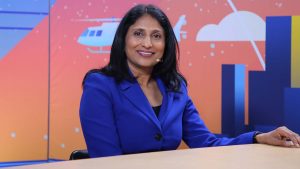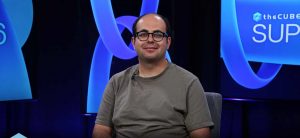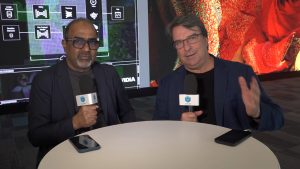OpenStack claims the right to compete for the future of cloud | #openstacksummit
![]() Troy Toman, a Cloud Architect at Rackspace, discussed the current state of the OpenStack project and the way collaboration works within it with theCUBE co-hosts John Furrier and Stu Miniman, in a live interview from OpenStack Summit 2014.
Troy Toman, a Cloud Architect at Rackspace, discussed the current state of the OpenStack project and the way collaboration works within it with theCUBE co-hosts John Furrier and Stu Miniman, in a live interview from OpenStack Summit 2014.
Commenting on OpenStack’s evolution, Toman said “we’re going through a maturation process as a community and as an organization. We’ve earned the right to compete for the future of cloud,” but they haven’t fixed everything yet and certainly aren’t done.
“The Foundation itself has matured,” he explained, as this is an organization that didn’t exist in OpenStack’s early days.
Balancing science with business
.
Asked to share more on the Foundation’s recent technical committee meeting, Toman said he was “surprised of how aligned both perspectives were.” He admitted there was a perception of tension between the tech and business side of OpenStack, but that is more an idea, not a reality. The two sides have “very similar priorities, we all realize what the issues are,” said Toman, noting there is a natural distrust on the engineering side for the business , but the way trust gets built is to create common experiences.
Explaining his earlier statement, “conflict without trust is just politics, conflict with trust is a search for truth,” Toman said it was really about the whole community.
“Everyone involved in OpenStack feels this tension,” he went on, saying that people wonder if the guy from Red Hat had an agenda, or whether Hewlett-Packard was trying to take over a project. “At Rackspace we have probably too many conversations about how we win OpenStack, when we should talk about how OpenStack will win the market place.”
Balancing leadership within open source
Commenting on how leadership works within OpenStack, he said they “don’t have the kind of people that tell others what to do.” The project has a “foundation of putting the project before the individual goals. When everyone is in alignment, it all moves with much more force, and I think in the long run it’s better.”
Asked about Rackspace’s current positioning in the OpenStack community, Toman said “We are now down to about 10 percent of the contributions,” from an initial contribution of more than 50 percent.
“We’re contributing at a very substantial rate, we contribute a lot around scale. We run the world’s larges public cloud that runs on OpenStack, we run hundreds of private clouds. It’s essential to the future of the company,” Toman detailed. As far as Rackspace’s decision not to own the project goes, he explained that they “always wanted this to be a community-driven project. We’re doing something new here. I think four years in we’re doing great.”
Driving adoption for OpenStack in enterprise
Commenting on enterprise adoption challenges, Toman stated that “it does take a lot of OpenStack expertise to bring out a usable, sizable implementation,” naming some companies such as Wells Fargo and Disney that are already using OpenStack. “It’s a solid project,” Toman went on. “If you have the skills, it’s delivering value into the enterprise.” However, “we recognize inside the project that we need to make this more accessible. It is the reason why we’re doing so much around operators.”
Asked to explain how cloud should be valued, Toman said “we’re really talking about a fundamental transformation of the way services and IT gets delivered.” But he warned that you cannot “go so fast and trip everything up. One of my big worries is that this idea for this quick, fast, super return will get in our way of realizing this is for the long haul.”
Asked how one moves from DevOps as a specialty to more of a CloudOps protocol, Toman explained “you sort of get to the heart of it. The reality is, to do what we describe as DevOps, you have to be a kind of superman.” With the cloud and tools, Toman said, there is a need to make sure that the software does not require the superhumans.
Defining a bumper sticker for OpenStack Summit, Toman said it was “bringing the operators and users together with the developers.”
A message from John Furrier, co-founder of SiliconANGLE:
Your vote of support is important to us and it helps us keep the content FREE.
One click below supports our mission to provide free, deep, and relevant content.
Join our community on YouTube
Join the community that includes more than 15,000 #CubeAlumni experts, including Amazon.com CEO Andy Jassy, Dell Technologies founder and CEO Michael Dell, Intel CEO Pat Gelsinger, and many more luminaries and experts.
THANK YOU








